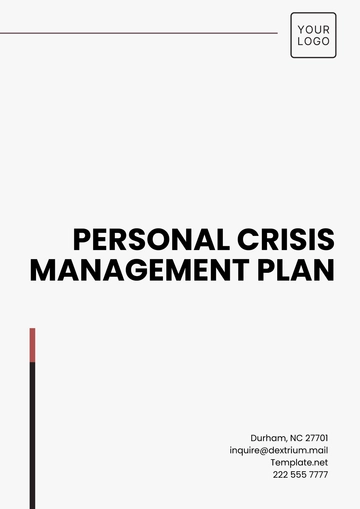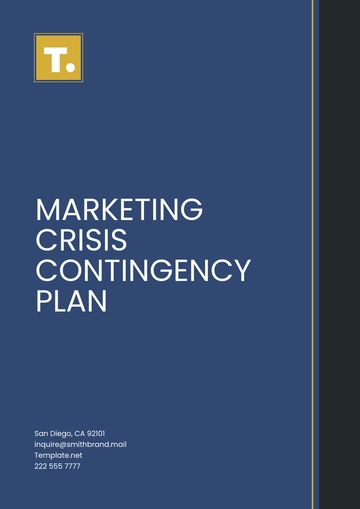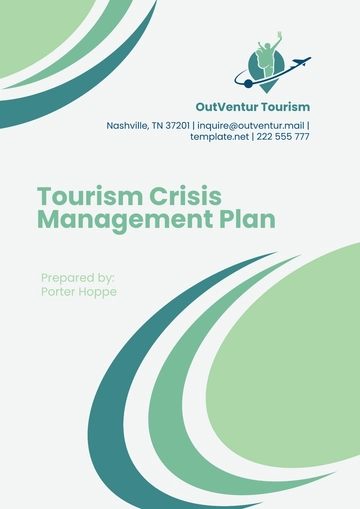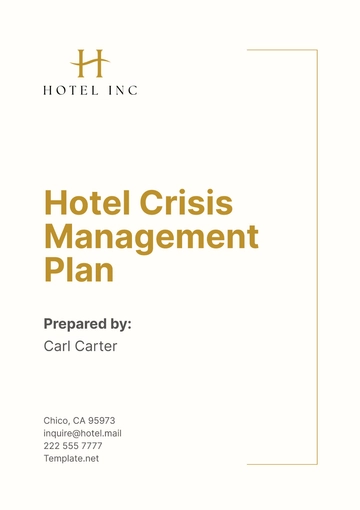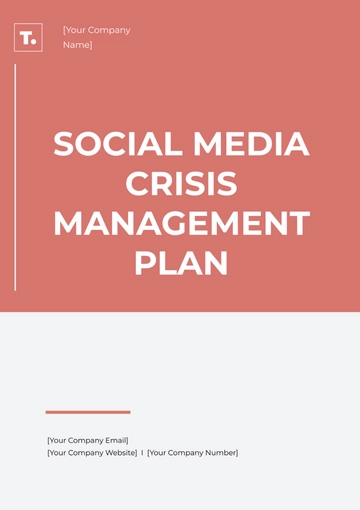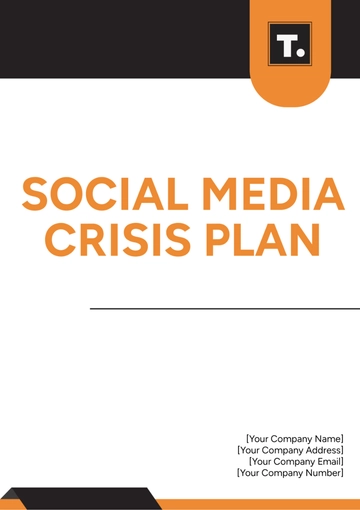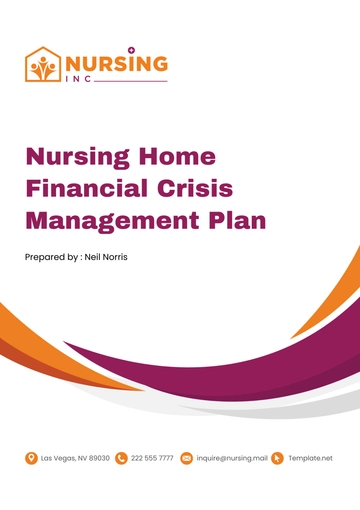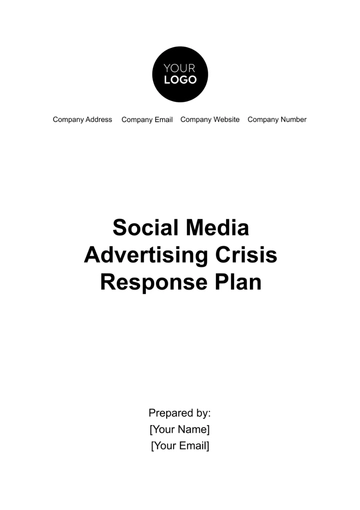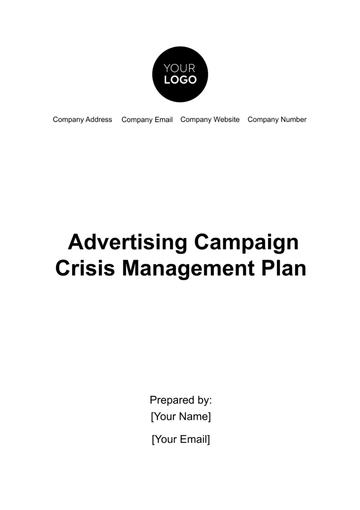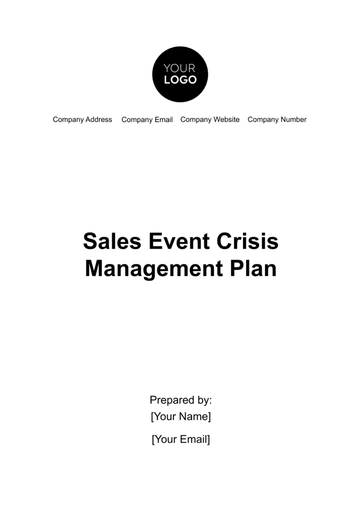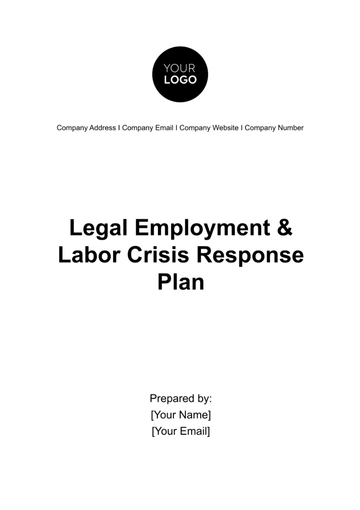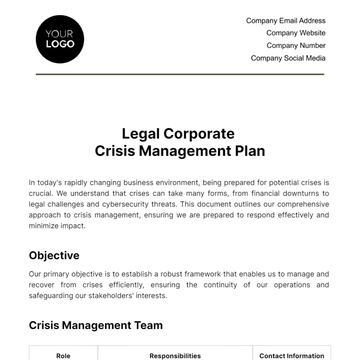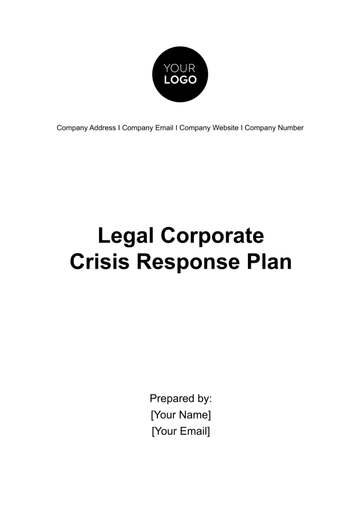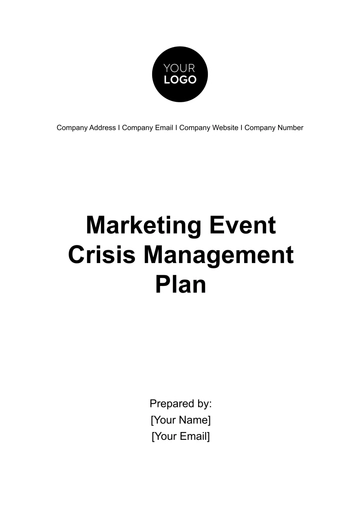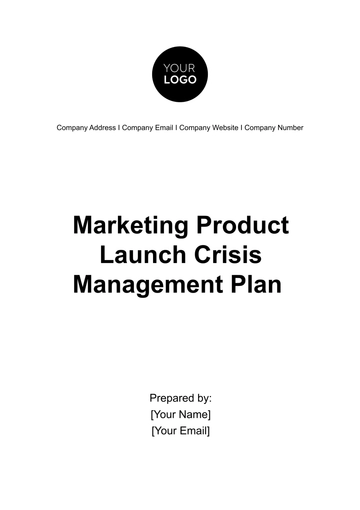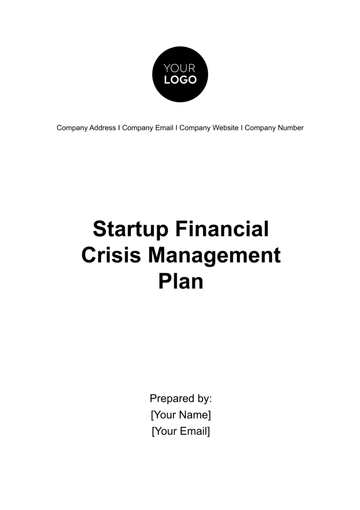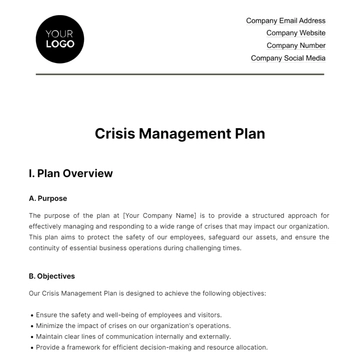Free Board of Director Crisis Management Plan

I. Introduction
This Crisis Management Plan provides the board of directors with a framework to handle emergencies and mitigate risks systematically. This plan ensures that [Your Company Name] can adapt quickly while maintaining transparency and accountability.
Purpose of the Plan
The Crisis Management Plan is designed to provide a proactive approach to identifying, assessing, and responding to crises. It aims to minimize disruption while preserving stakeholder trust. The plan applies to all business units, operations, and geographical locations under the governance of [Your Company Name]. This ensures a unified response to any crisis situation.
II. Crisis Identification and Assessment
Understanding potential threats is the first step in crisis management. This section outlines the processes for identifying, categorizing, and assessing crises based on their impact and likelihood. A systematic approach to risk assessment enables prioritization and resource allocation.
Defining a Crisis: Crises are defined as any event or situation that threatens the company’s operations, reputation, or stakeholders. These include natural disasters, cyberattacks, and financial emergencies.
Early Warning Systems: Implementing monitoring systems to detect warning signs enables preemptive action. Examples include financial analytics, social media monitoring, and employee feedback.
Risk Assessment Framework: Risks are evaluated based on their potential impact and likelihood of occurrence. A scoring system helps prioritize responses.
Categorization of Crises: Crises are categorized into operational, reputational, and strategic. Each category requires a tailored response plan.
Documentation of Risks: Maintaining a risk registry ensures all identified risks are documented and tracked. This helps in historical analysis and response improvement.
III. Crisis Response Team
A dedicated Crisis Response Team (CRT) ensures swift and effective management of any crisis. This section outlines the team structure, roles, and responsibilities to streamline coordination and decision-making.
Composition of the CRT: The team includes representatives from the board, legal, HR, IT, and operations departments. Each member brings expertise to address specific crisis aspects.
Roles and Responsibilities: Clear definitions of roles ensure accountability. For example, the legal team handles compliance, while operations focus on business continuity.
Decision-Making Authority: The CRT is empowered to make critical decisions during crises. This reduces delays and ensures timely actions.
Training and Preparedness: Regular simulations and workshops prepare the CRT for real-life scenarios. These exercises enhance their readiness and efficiency.
Communication Protocols: The CRT is responsible for maintaining internal and external communication during crises. This includes regular updates to the board and stakeholders.
IV. Crisis Communication Plan
Clear and consistent communication is vital during a crisis. This section details the steps for managing communication with employees, stakeholders, and the public to maintain transparency and trust.
Designated Spokesperson: A trained spokesperson ensures that all external communication is accurate and aligned with the company’s messaging. This reduces the risk of misinformation.
Internal Communication Channels: Clear communication lines ensure employees receive timely updates. Tools such as email alerts and intranet posts are utilized.
External Communication Strategy: Transparent updates to stakeholders, including investors and customers, reinforce trust. Press releases and social media are key tools.
Media Relations: The PR team coordinates with media outlets to manage coverage. This minimizes speculation and misinformation.
Feedback Mechanisms: Establishing feedback channels helps the company understand stakeholder concerns and adjust its communication strategy accordingly.
V. Crisis Escalation Procedures
Efficient escalation protocols ensure that crises are addressed at the appropriate level of authority. This section defines the steps to escalate issues from operational teams to the board.
Criteria for Escalation: Escalation is triggered when a crisis exceeds predefined thresholds for impact or duration. Clear criteria ensure consistency.
Levels of Escalation: Different levels, from departmental to board-level, ensure that the right teams are involved. Each level has specific responsibilities.
Documentation Requirements: Detailed records of escalation steps support accountability. This documentation aids in post-crisis analysis.
Timelines for Escalation: Clear timelines ensure rapid escalation when needed. This reduces delays in response.
Coordination with External Authorities: When necessary, the escalation process involves government agencies or regulators. This ensures compliance and broader support.
VI. Resource Allocation and Budgeting
Efficient resource allocation is essential for effective crisis management. This section outlines the financial and human resources required for crisis response.
Resource Type | Estimated Cost (2055) | Allocated Budget (2054) |
|---|---|---|
Crisis Training | $500,000 | $450,000 |
Emergency Equipment | $300,000 | $320,000 |
IT Systems | $700,000 | $680,000 |
The table highlights an increase in spending on crisis training due to new simulation technologies, while equipment costs have decreased due to bulk purchasing. Continued investment in IT systems is necessary to address emerging cyber threats.
VII. Crisis Monitoring and Resolution
Tracking the status of crises ensures effective resolution. The table demonstrates the company’s agility in resolving crises like data breaches while highlighting ongoing challenges, such as natural disasters, requiring additional resources.
Crisis Type | Status | Resolution Time | Key Actions Taken |
|---|---|---|---|
Data Breach | Resolved | 48 hours | System patching, PR |
Natural Disaster | Ongoing | TBD | Employee relocation |
Financial Misreport | Under Review | 72 hours | Audit and correction |
VIII. Recovery and Post-Crisis Analysis
Recovery is crucial for returning to normalcy. Employee morale requires focused recovery efforts through engagement programs. Customer retention has remained stable, reflecting effective crisis communication.
IX. Conclusion
A robust crisis management framework requires continuous improvement. [Your Company Name] will conduct annual reviews of this plan to address emerging risks and integrate feedback from past crises. Enhanced training programs, technology investments, and cross-departmental collaboration will ensure sustained resilience.
- 100% Customizable, free editor
- Access 1 Million+ Templates, photo’s & graphics
- Download or share as a template
- Click and replace photos, graphics, text, backgrounds
- Resize, crop, AI write & more
- Access advanced editor
Prepare for the unexpected with the Board of Director Crisis Management Plan Template from Template.net. Fully editable and customizable, this template is perfect for outlining strategies, responsibilities, and actions during organizational crises. Use our AI Editor Tool to tailor it to your company's needs seamlessly. Its clear and comprehensive format ensures effective crisis mitigation.
You may also like
- Finance Plan
- Construction Plan
- Sales Plan
- Development Plan
- Career Plan
- Budget Plan
- HR Plan
- Education Plan
- Transition Plan
- Work Plan
- Training Plan
- Communication Plan
- Operation Plan
- Health And Safety Plan
- Strategy Plan
- Professional Development Plan
- Advertising Plan
- Risk Management Plan
- Restaurant Plan
- School Plan
- Nursing Home Patient Care Plan
- Nursing Care Plan
- Plan Event
- Startup Plan
- Social Media Plan
- Staffing Plan
- Annual Plan
- Content Plan
- Payment Plan
- Implementation Plan
- Hotel Plan
- Workout Plan
- Accounting Plan
- Campaign Plan
- Essay Plan
- 30 60 90 Day Plan
- Research Plan
- Recruitment Plan
- 90 Day Plan
- Quarterly Plan
- Emergency Plan
- 5 Year Plan
- Gym Plan
- Personal Plan
- IT and Software Plan
- Treatment Plan
- Real Estate Plan
- Law Firm Plan
- Healthcare Plan
- Improvement Plan
- Media Plan
- 5 Year Business Plan
- Learning Plan
- Marketing Campaign Plan
- Travel Agency Plan
- Cleaning Services Plan
- Interior Design Plan
- Performance Plan
- PR Plan
- Birth Plan
- Life Plan
- SEO Plan
- Disaster Recovery Plan
- Continuity Plan
- Launch Plan
- Legal Plan
- Behavior Plan
- Performance Improvement Plan
- Salon Plan
- Security Plan
- Security Management Plan
- Employee Development Plan
- Quality Plan
- Service Improvement Plan
- Growth Plan
- Incident Response Plan
- Basketball Plan
- Emergency Action Plan
- Product Launch Plan
- Spa Plan
- Employee Training Plan
- Data Analysis Plan
- Employee Action Plan
- Territory Plan
- Audit Plan
- Classroom Plan
- Activity Plan
- Parenting Plan
- Care Plan
- Project Execution Plan
- Exercise Plan
- Internship Plan
- Software Development Plan
- Continuous Improvement Plan
- Leave Plan
- 90 Day Sales Plan
- Advertising Agency Plan
- Employee Transition Plan
- Smart Action Plan
- Workplace Safety Plan
- Behavior Change Plan
- Contingency Plan
- Continuity of Operations Plan
- Health Plan
- Quality Control Plan
- Self Plan
- Sports Development Plan
- Change Management Plan
- Ecommerce Plan
- Personal Financial Plan
- Process Improvement Plan
- 30-60-90 Day Sales Plan
- Crisis Management Plan
- Engagement Plan
- Execution Plan
- Pandemic Plan
- Quality Assurance Plan
- Service Continuity Plan
- Agile Project Plan
- Fundraising Plan
- Job Transition Plan
- Asset Maintenance Plan
- Maintenance Plan
- Software Test Plan
- Staff Training and Development Plan
- 3 Year Plan
- Brand Activation Plan
- Release Plan
- Resource Plan
- Risk Mitigation Plan
- Teacher Plan
- 30 60 90 Day Plan for New Manager
- Food Safety Plan
- Food Truck Plan
- Hiring Plan
- Quality Management Plan
- Wellness Plan
- Behavior Intervention Plan
- Bonus Plan
- Investment Plan
- Maternity Leave Plan
- Pandemic Response Plan
- Succession Planning
- Coaching Plan
- Configuration Management Plan
- Remote Work Plan
- Self Care Plan
- Teaching Plan
- 100-Day Plan
- HACCP Plan
- Student Plan
- Sustainability Plan
- 30 60 90 Day Plan for Interview
- Access Plan
- Site Specific Safety Plan
